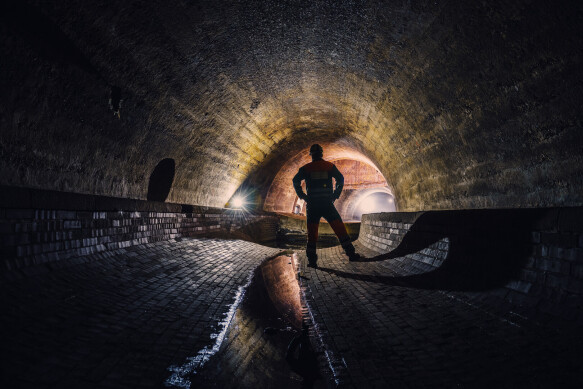Interesting facts
History of the Kraków sewer system
The history of the Kraków sewage network dates back to the 16th century. It was then that the first canals were created in the royal capital city of Kraków, made of dimension stone with lime mortar grouting. They carried waste from the central part of the town to the moat, using gravity. Constructed at the turn of the 19th and 20th centuries, they were the beginning of the present-day sewer system
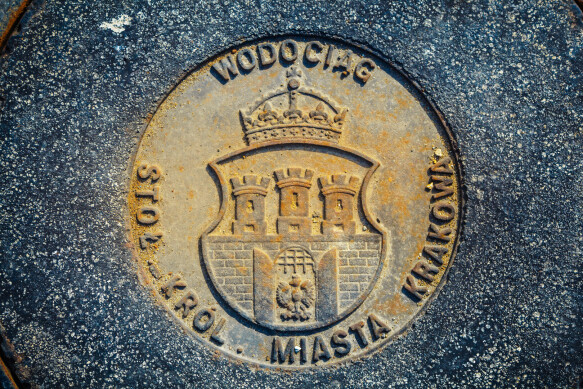
Nowa Huta Interceptor
In the passage under the southern canal in the area of ul. Kopaniec is an interceptor originally called Kolektor Nowohucki, i.e. the Nowa Huta Interceptor. The canal was created in the 1950s together with the “Nowa Huta” steelworks. Its dimensions are 1400/2100, and the original length was 5,800 linear metres. It went from ul. Klasztorna to the outlet in Mogiła Suchego Jaru. At that time, the sewage from the interceptor was discharged directly into the Vistula through an open canal.
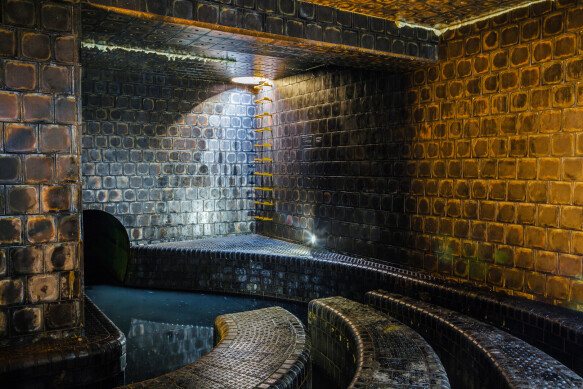
Left-bank interceptor of the Vistula River
The history of the Kraków sewage network dates back to the 16th century. It was then that the first canals were created in the royal capital city of Krakow, made of dimension stone with lime mortar grouting. They carried waste from the central part of the town to the moat, using gravity. Constructed at the turn of the 19th and 20th centuries, they were the beginning of the present-day sewer system
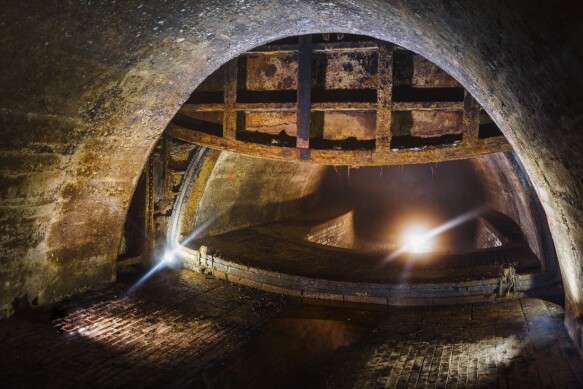
Ready, set, action!
The left-bank interceptor was designed and built during the Austrian partitions. It is safe to say that it is one of the most "representative" fragments of the Kraków sewage system. With its early 20th century appearance, it has already been used by film crews on several occasions. For instance, it provided a backdrop for such productions as Steven Spielberg’s Schindler’s List, Wojciech Smarzowski’s The Mighty Angel, and several pseudo-documentaries.
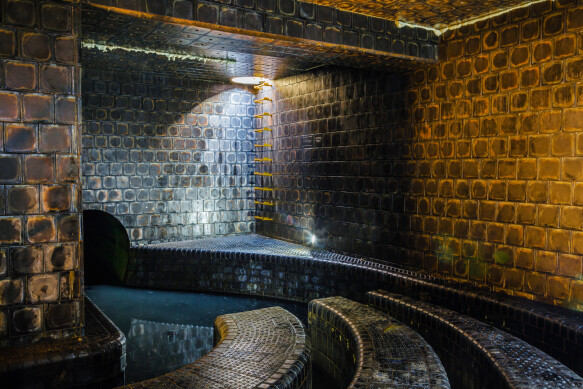
Right-bank interceptor of the Vistula River
The right-bank interceptor of the Vistula River is the second most important sewage interceptor. It drains sewage and rainwater in a combined system from the entire right-bank part of Kraków. The length of the interceptor, similar to the left-bank one, is about 7 km. Plans for its construction were approved in 1907 by the Ministry in Vienna. The construction of the interceptor was completed in 1920. Because of its orientation within Podgórze, specifically the area of ul. Port Solny (Ghetto Heroes Square), the interceptor was used many times during the war as an escape route from the Kraków ghetto.
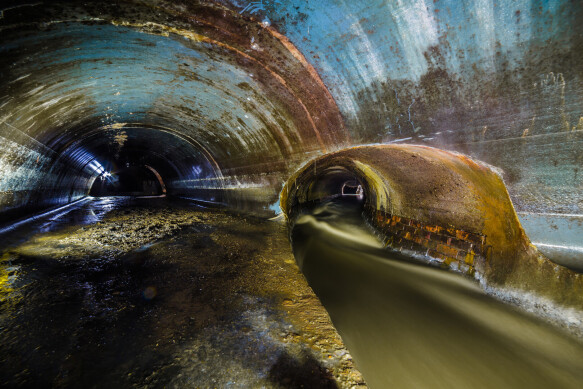
Warning level on the Vistula
In the event of exceeding the warning level on the Vistula, the Mayor of the City of Kraków announces a flood emergency. Then the technical services of WMK S.A. (Krakow Municipal Water and Sewage Company) responsible for the operation of the sewage system are put on standby. When the level of the Vistula on the indicator in Bielany reaches 420 cm, a procedure is initiated to determine the order of closing individual gates on storm overflows. After the water level drops below 420 cm, the gates are opened in the appropriate order.
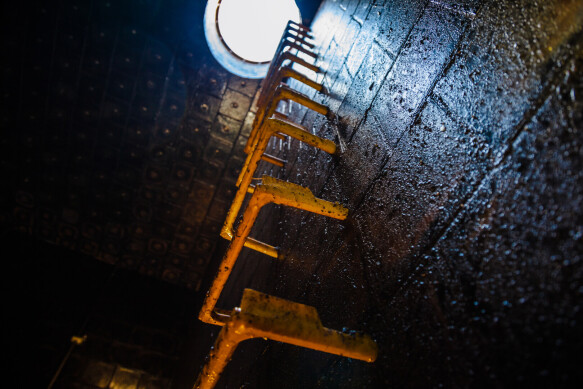
Płaszów interceptor
In order to protect Kraków from high water, it was originally planned to build pumping stations by the outlets of both interceptors. However, the idea was abandoned as a result of economic calculation. Instead came the concept of transferring sewage from the left-bank interceptor to the right side of the Vistula and further along, after connecting with the Podgórze interceptor (right-bank interceptor), via an open ditch to the beginning of the Drwina River. Unfortunately, the implementation of the concept was shelved for nearly three decades. The plan of transferring sewage from the left side of the Vistula to its right bank was revisited after the war. The construction of the Płaszów interceptor, which drains sewage and rainwater from the two main left- and right-bank interceptors, began in 1951.
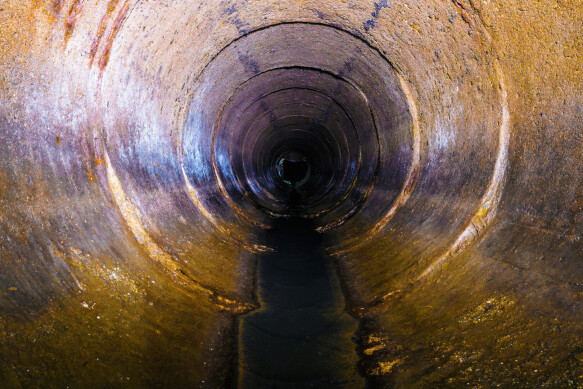
It Won't fit in a sewage
Every day, in the process of mechanical treatment, 5.5 tonnes of waste and 15 tonnes of sand are removed from sewage. The amount of sewage flowing every day to Kraków’s treatment plants would flood the Main Market Square to a height above the first floor. Every day, a huge amount of rubbish which should not be there gets into the municipal sewage system: Q-tips, dental floss, wet wipes, disposable nappies and other hygienic products, as well as food, paints, oils, debris, stones, newspapers, medications, etc. But all that doesn’t belong in the sewage!
